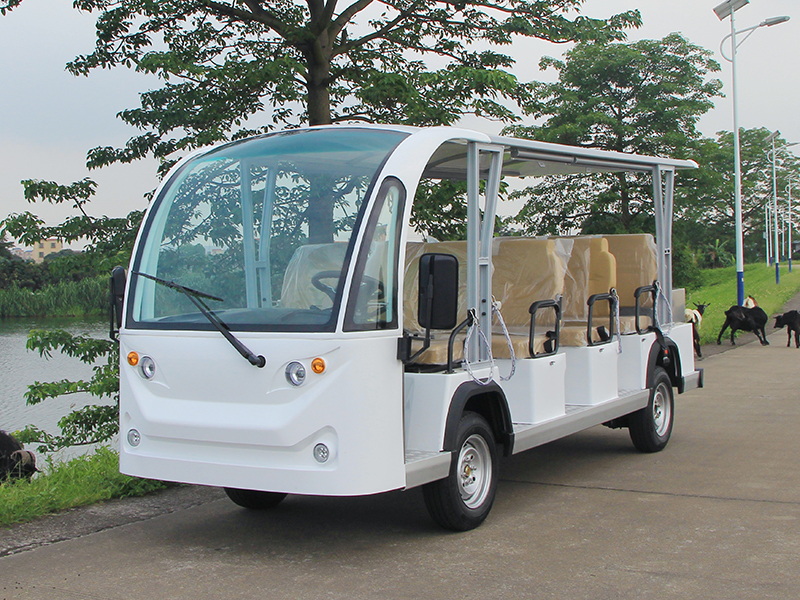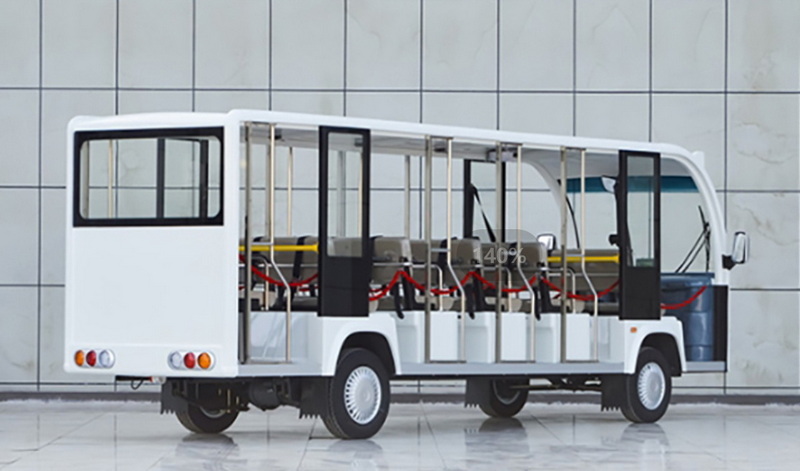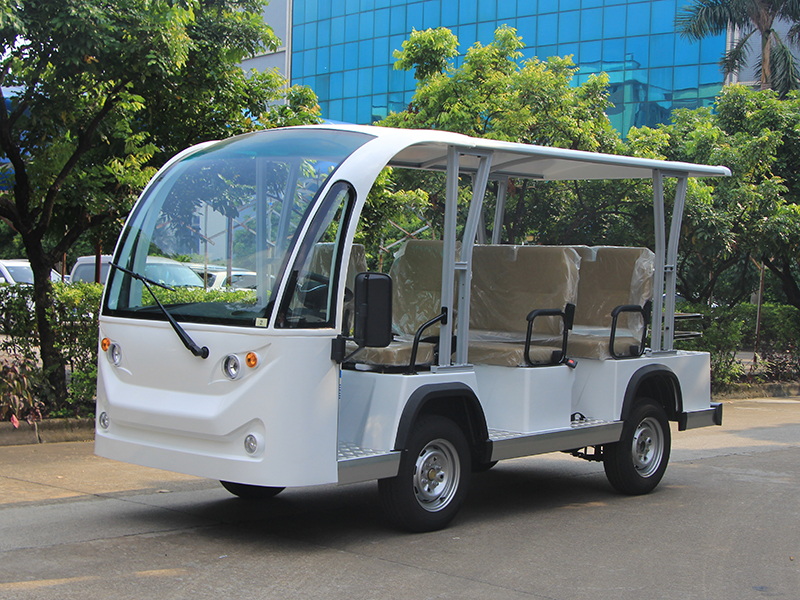Content Menu
● Types of Electric Sightseeing Cars
>> Touring Cars
>> Shuttle Cars
>> Custom Golf Carts
>> Tourist Trams
● Key Factors to Consider When Choosing the Best Electric Sightseeing Car
>> 1. Understand Your Target Market
>> 2. Capacity and Size
>> 3. Battery Range and Charging
>> 4. Performance and Terrain Capability
>> 5. Features and Amenities
>> 6. Budget and Operational Costs
● Popular Models of Best Electric Sightseeing Cars
>> 10-Seater Electric Sightseeing Car
>> 11-Seater Electric Sightseeing Car (Langqing LQY113B)
>> Off-Road Electric Sightseeing Carts
● Additional Considerations for Choosing the Best Electric Sightseeing Car
>> Environmental Impact and Sustainability
>> Maintenance and Serviceability
>> Customization and Branding
>> Regulatory Compliance
>> Driver Training and Safety Protocols
● Conclusion
● FAQ
>> 1. What is the typical battery range for the best electric sightseeing cars?
>> 2. How many passengers can electric sightseeing cars accommodate?
>> 3. Are electric sightseeing cars suitable for off-road use?
>> 4. What safety features should I look for in an electric sightseeing car?
>> 5. How long does it take to charge an electric sightseeing car?
Electric sightseeing cars have become an essential asset for businesses in tourism, hospitality, and local transportation sectors. They offer an eco-friendly, quiet, and efficient way to transport visitors while enhancing their sightseeing experience. Selecting the best electric sightseeing car for your business involves understanding your operational needs, passenger expectations, budget constraints, and environmental conditions. This comprehensive guide will walk you through the key factors and options to help you make an informed decision.

Types of Electric Sightseeing Cars
Electric sightseeing cars come in various models designed to serve different purposes and environments. Understanding these types will help you identify which best suits your business.
Touring Cars
- Designed for comfort and luxury.
- Features: Plush seating, climate control, panoramic windows.
- Best for: City tours, luxury sightseeing experiences.
Shuttle Cars
- Practical and efficient for short-distance travel.
- Used in resorts, airports, hotels.
- Best for: Transporting guests within contained areas.
Custom Golf Carts
- Originally for golf courses but adaptable for tourism.
- Equipped with golf bag holders, weather protection.
- Best for: Golf resorts, small tourist attractions.
Tourist Trams
- Multi-car design for larger groups.
- Open-air experience suitable for city streets and historical districts.
- Best for: High-volume tourist areas.
Key Factors to Consider When Choosing the Best Electric Sightseeing Car
1. Understand Your Target Market
Identify your primary customers and their expectations. Tourists often desire comfort, good visibility, and amenities like audio commentary systems. Corporate clients may prioritize reliability and professional appearance. Understanding your clientele will help you select a vehicle that meets or exceeds their expectations, thereby enhancing customer satisfaction and repeat business.
2. Capacity and Size
Electric sightseeing cars range from intimate 4-seaters to large 23-seat buses. Analyze your average group size and peak demand. For example:
- Small groups: 4-6 seats.
- Medium groups: 10-11 seats.
- Large groups: 14-23 seats.
Mixing vehicle sizes can optimize service efficiency. For instance, smaller vehicles can be used for quick, frequent trips, while larger cars handle bigger groups during peak times.
3. Battery Range and Charging
- Ensure the battery range exceeds your longest daily route by at least 30%. This buffer prevents service interruptions.
- Typical ranges vary from 50 km to 160 km per charge.
- Charging time usually ranges from 6 to 10 hours.
- Lithium-ion batteries offer longer life and faster charging compared to lead-acid batteries.
- Consider the availability of charging infrastructure at your location. Installing fast chargers can improve turnaround times and reduce downtime.
4. Performance and Terrain Capability
For off-road or rugged terrain sightseeing, choose vehicles with:
- Higher ground clearance (8-15 inches).
- Powerful motors (5kW or higher).
- Independent suspension systems.
- All-terrain tires.
For urban or flat terrain, standard touring or shuttle cars suffice. Additionally, consider the climate and weather conditions. Vehicles with weatherproofing and climate control systems will improve passenger comfort in extreme conditions.
5. Features and Amenities
Enhance passenger experience with:
- Climate control (air conditioning and heating).
- Audio systems for guided tours.
- USB charging ports.
- Weather protection (removable sides, sunroofs).
- Safety features like seat belts, handrails, and emergency brakes.
- Accessibility options for wheelchair users.
- Custom branding opportunities to promote your business.
Adding technology such as GPS tracking and onboard WiFi can also enhance the tour experience and operational management.
6. Budget and Operational Costs
- Consider initial purchase price, maintenance, and operational costs.
- Premium models may cost more upfront but offer better reliability and passenger satisfaction.
- Factor in after-sales support, warranty, and availability of spare parts.
- Evaluate the total cost of ownership including electricity costs, insurance, and driver training.
- Leasing options may be available for businesses looking to reduce upfront investment.

Popular Models of Best Electric Sightseeing Cars
10-Seater Electric Sightseeing Car
- Capacity: 10 passengers including driver.
- Range: Up to 160 km per charge.
- Max speed: 40 km/h.
- Features: Sunroof, air conditioner, GPS navigation, audio system.
- Safety: Seat belts, airbags, ABS, stability control.
- Battery: 40 kWh, 5-speed automatic transmission.
- Ideal for: Small groups, city tours, hotels, airport transfers.
11-Seater Electric Sightseeing Car (Langqing LQY113B)
- Capacity: 11 seats.
- Motor: 5kW DC or 7.5kW AC.
- Range: 100 km.
- Max speed: 28 km/h.
- Features: Electric power steering, optional AC, safety bars, seat belts.
- Climbing ability: Up to 30% gradient.
- Ideal for: Hotels, resorts, corporate campuses.
Off-Road Electric Sightseeing Carts
- Higher ground clearance and powerful motors (5kW+).
- Range: 60-90 km.
- Seating: 4 to 23 seats.
- Features: Independent suspension, all-terrain tires, roll cages, seat belts.
- Ideal for: Wildlife reserves, adventure tourism, rugged sightseeing.
Additional Considerations for Choosing the Best Electric Sightseeing Car
Environmental Impact and Sustainability
Using electric sightseeing cars reduces carbon emissions and noise pollution, which is increasingly important for environmentally conscious tourists and businesses. Choosing vehicles with recyclable batteries and sustainable manufacturing processes further enhances your company's green credentials.
Maintenance and Serviceability
Electric vehicles generally require less maintenance than combustion engine vehicles. However, ensure your chosen model has accessible service centers or trained technicians nearby. Regular maintenance of batteries, motors, and electronic systems is crucial to avoid downtime.
Customization and Branding
Many manufacturers offer customization options including paint colors, logos, and interior features. A branded sightseeing car acts as a moving advertisement and can enhance your business's visibility and professionalism.
Regulatory Compliance
Check local regulations regarding electric vehicle use, safety standards, and road permissions. Some areas may require specific certifications or licenses for passenger transport vehicles.
Driver Training and Safety Protocols
Invest in driver training programs to ensure safe operation of electric sightseeing cars. Drivers should be familiar with battery management, emergency procedures, and customer service best practices.
Conclusion
Choosing the best electric sightseeing car for your business requires balancing passenger comfort, vehicle capacity, terrain suitability, and budget. Prioritize vehicles that offer sufficient battery range, safety features, and amenities aligned with your target market. Testing vehicles in your operational environment before purchase is highly recommended to ensure compatibility and satisfaction. Investing in quality electric sightseeing cars will not only enhance your guests' experience but also contribute to sustainable and eco-friendly tourism. With careful planning and selection, your business can provide memorable, comfortable, and environmentally responsible sightseeing experiences that set you apart from the competition.

FAQ
1. What is the typical battery range for the best electric sightseeing cars?
Most models offer a range between 50 km to 160 km per charge, with premium models reaching the higher end of this spectrum. Lithium-ion batteries provide longer ranges and quicker charging times compared to lead-acid batteries.
2. How many passengers can electric sightseeing cars accommodate?
Electric sightseeing cars come in various sizes, typically seating from 4 to 23 passengers. Choose based on your average group size and peak demand.
3. Are electric sightseeing cars suitable for off-road use?
Yes, specialized off-road electric sightseeing carts feature higher ground clearance, powerful motors, suspension systems, and all-terrain tires designed for rugged environments.
4. What safety features should I look for in an electric sightseeing car?
Essential safety features include seat belts, emergency braking systems, stability control, handrails, and, for off-road models, roll cages and lights.
5. How long does it take to charge an electric sightseeing car?
Charging times vary from 6 to 10 hours depending on battery type and charger used. Fast-charging options may reduce this time but require compatible infrastructure.










































